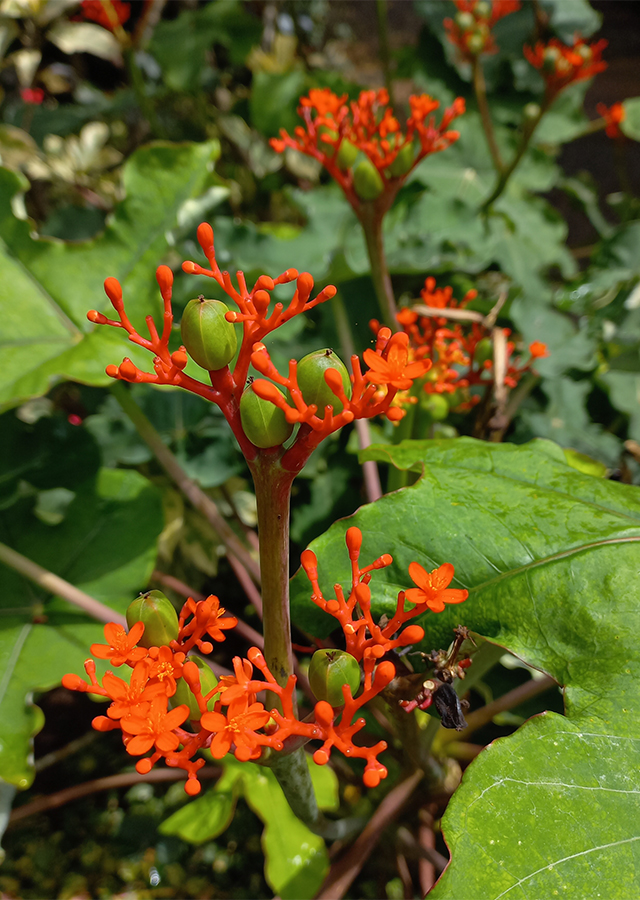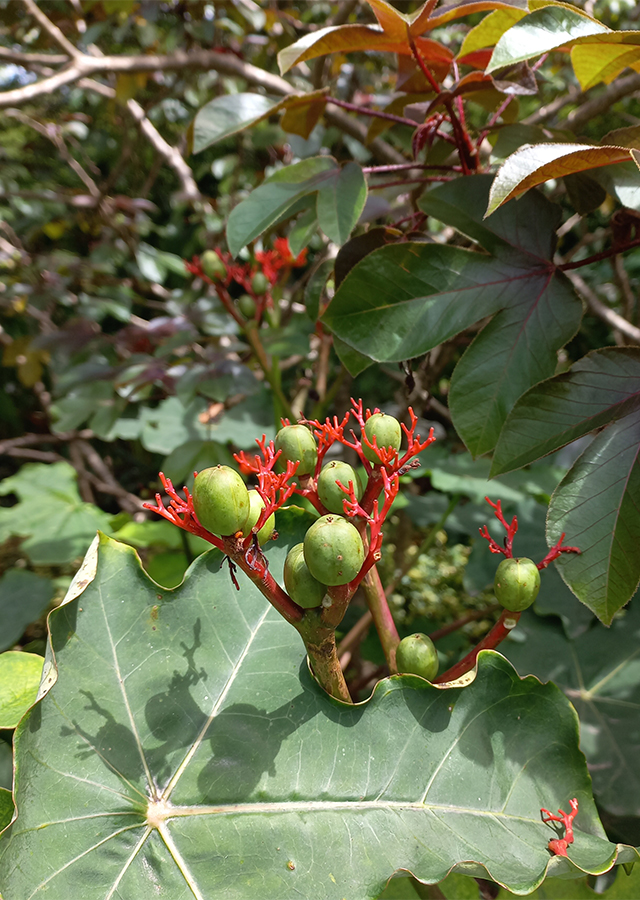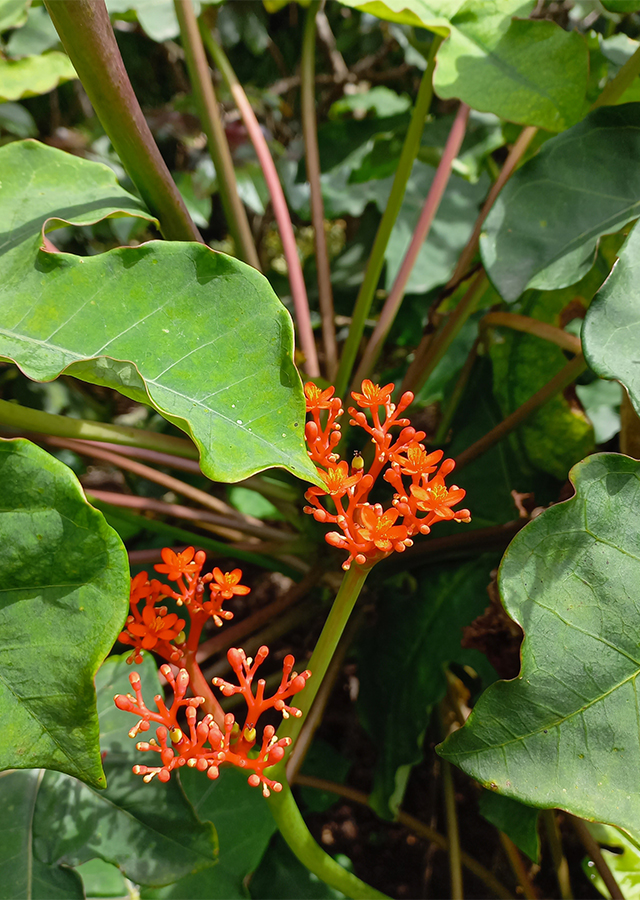Traditional Herbs from Jatropha podagrica
hemorrhoids
- Take enough Bali castor leaves and wash them until clean.
- Crush the leaves until they become a paste.
- Apply the paste to the hemorrhoids.
obat_gargle_for_tooth_and_mouth_disease
- Take the fruit, leaves and flowers Bali distance to taste then wash until clean.
- Boil all the ingredients until boiling.
- Let stand until warm/cold.
- Use as a mouthwash for dental and mouth diseases.
What is Jatropha podagrica Looks like??



Parts of Jatropha podagrica that could be used
- Seed
- Flower
- Fruit
- Root
Jatropha podagrica Distribution
Bali distance comes from Central America, Honduras, Nicaragua. This plant has a unique bottle-like rootstock and beautiful flowers so it is often used as an ornamental plant in pots, indoor plants and bonsai. This plant also has medicinal benefits and is used in traditional medicine to heal wounds, fever, swelling and snake bites.Agroecology of Jatropha podagrica
Balinese jatropha plants grow in an optimal environment, with an altitude of 0 - 1000 m above sea level, temperatures ranging from 18 - 30 °C, average rainfall of 300 � - 1,200 mm per year, well-drained, not flooded, and soil pH 5.0 -� 6.5. Likes areas with full sun and half shade, and prefers not too much water.
Morphology of Jatropha podagrica
- The lower stem is swollen, protruding, gray-skinned, with a large, bottle-like caudex.
- Leaf petioles measuring 8 - 10 cm. Peltate leaves, glossy green on top of the leaf, gray-green on the bottom leaves, flat, wavy, or shallow edges 3- to 5-lobed, 6 to 8 palmate veins, up to 30 cm in diameter, with sturdy stems attached to the underside of the leaves.
- Flowers are small, bright red or red orange, and clustered like a bouquet at the end of a long red stalk.
- The fruit is a capsule, ellipsoidal, about 1.5 cm, with 3 longitudinal grooves, initially green and fleshy, ripens to dark brown and bursts explosively to produce 2 up to 3 black seeds, spreading them 3 -\u00a04 m.
- The seeds are smooth and shiny brown, about 1.5 -\u00a02 cm long.
Cultivation of Jatropha podagrica
Balinese jatropha plant breeding can be done using plants originating from branch or stem cuttings or seeds. Even providing seeds using tissue culture techniques. Many nurseries usually use seeds which are carried out using polybag media, namely by planting plants in polybag media that has been processed with soil media mixed with fertilizer, and carrying out maintenance like other plants until they grow well.
Jatropha podagrica, more details :
Chemical Content of Jatropha podagricaAlkaloids, tannins, flavonoids, saponins, coumarins, steroids, phenols, phenolic acids, glycoflavones, proanthocyanidins, japodic acid, erythrinasinate, fraxidin, triterpenes, fraxidin, fraxetin, scoparone, 3-acetylaleuritolic acid, sitosterol and sitosterone, oleum infernale or oleum ricini majoris, toxalbumin (kursin).
Benefits of Jatropha podagrica
As a tonic, aphrodisiac, and erection aid (Viagra) in men, heals wounds, relieves pain, reduces swelling, detoxifies snake bites, treats infections, treats jaundice, gonorrhea, as a laxative, worm medicine, abortion, gout medicine, paralysis, skin diseases, rheumatism, pruritus, parasitic skin diseases, hemostatic agents, antipyretics, diuretics, choleretics, rheumatism, hemorrhoids, worms, tooth and mouth pain, disorders menstruation, glossitis, postpartum disorders, ulcers.
Simplisia of Jatropha podagrica
Another Facts for Jatropha podagrica :
Synonym of Jatropha podagrica-
Habitus of Jatropha podagrica
Bush. Annual succulent or sub-woody shrub, growing to a height of 0.5 to 1 meter.
Habitat of Jatropha podagrica
- Riverside", "Forest", "Roadside", "Grassland", "Land
No comments:
Post a Comment